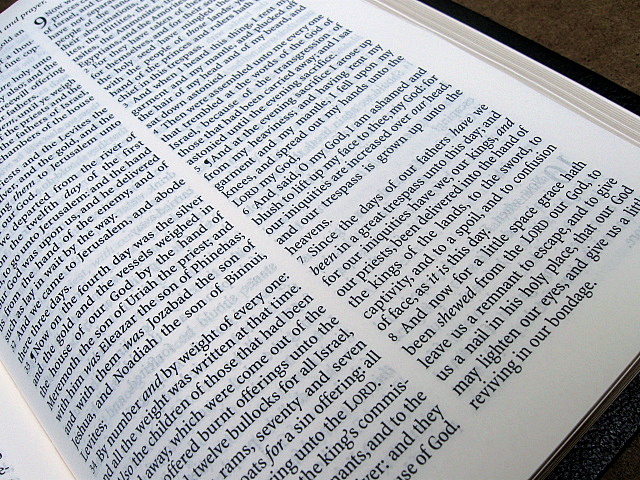Dear Lissy,
I've spent most of my life looking for one "perfect" system to run our home. Maybe a creamy leather planner with lots of sections and fun goodies? Or a hand-crafted home management binder? A tickler file, maybe?
 |
| No, Tigger, I said trigger! But how can I resist such a cute fella? |
I love me a system, but it's
way more fun to set one up than actually use it. I tend to budget time, neglecting to consider my
energy level or the seasons.
I started last year making an effort to be 100% present and aware.To
look well to the ways of my home. To rely more on my eyes than a system. This is nothing new. I've mentioned "
time and eyes" as your two best tools since I began these letters.
Our first step was to
simplify our home, making it easier to tidy and clean.
- We removed extra furniture and temporary storage from every room (baskets, totes, etc.)
- We got rid of dumpsters worth and minivans full of stuff.
- We set up permanent, easy storage solutions for things we needed to keep.
My next goal was to
reset routines we had established when you were little. Your morning, afternoon, and evening routines expanded to include yard and household tasks. My routines were simplified and streamlined to reflect the fact that all three of you are now in school until at least 1 pm and attending 4H groups in the afternoons and evenings. The simple fact is,
daily does it. The everyday is important.
Lastly,
I've spent the last year setting hundreds of little systems into place with (mostly) visual triggers. I noticed how much easier my garden was when I used phrenology - the study of seasonal clues -- to plant, transplant, cover, and harvest my crops. Why not transfer that to housekeeping?
I don't need a monthly list with "clean coffeemaker" on it if I make it a habit to run vinegar water through our coffeemaker every time the bag of beans runs out (we buy BIG bags, so that's roughly once every 2-3 weeks).
Visual trigger: Empty bag of coffee beans
Next action: Run vinegar water through coffeemaker
I started with areas that were a
daily challenge:
Action: Clean kitchen, including sweeping and damp-mopping floor
Trigger: End of meal. The kitchen has to be clean -- counters, sink, appliances, floor, ceiling -
clean.
Action: Laundry re-boot
Trigger: Snack/drink. Thirsty? Hungry? Craving? Switch, fold, or put away laundry
first.
Action: Take vitamins and supplements
Trigger: RSS Reader log-in. My reader is one of my morning habits. I hate swallowing vitamins.
I also included
weekly tasks. . .
Action: Dust bedroom
Trigger: Changing sheets (Clean sheets are a big deal to me, so this is a great trigger)
Action: Quick blitz pick-up/wipe down of whole house
Trigger: 4 pm
Action: Thoroughly clean kitchen, top down
Trigger: Monday (Each day is now a trigger for a different zone in the house)
And even
seasonal tasks. . .
Action: Clean windows & curtains
Trigger: Pollen fall in the spring
Action: Clean out ceiling light fixtures
Trigger: Changing bulb OR washing window exteriors in room or just looking at it and thinking "OH, my! That things is full of bugs. Yuck!"
Action: Flip or spin mattresses
Trigger: Time change (flip it in the fall, spin it in the spring)
I've removed about 90% of the items on my lists using this method. It's slow. You can't fix triggers all at once, because in essence you're forming new habits. I worked on one at a time until that item was already done when it popped up on a list.
What does this mean practically?
I
have to be in every room of the house several times a day because this system depends heavily on my eyes. I can't just call up on the intercom and have your brother switch the laundry to the dryer, because I won't be able to do a visual check on the bathroom and classroom. I'm constantly doing 10 second to 2 minute tasks throughout the course of the day.
I've
revamped my tickler so it's a
monthly folder instead of a daily one like when you were little. I write any reminders in the monthly folder on my calendar and add a circled "T" so I know there's info in the tickler to go with that item. Much of my information comes in digitally, and is stored in my G-mail account now, too. That goes on the calendar with a "G" in a circle.
I still write a
scheduled, daily to-do list, but I rarely have more than 3-4 items on the list because the rest has fallen into habits and rhythms.
I'm much more
relaxed and able to focus on relationships. My list is small, and the triggers come at all different times during the day. I'm also able to stop working and enjoy the family after dinner clean-up.
Although I suspect this is how most people manage a home, it was a transition for me. I can happily overlook clutter or laundry temporarily and sit at my sewing machine or computer and hammer out a project. Now I have the freedom to pull out my sewing machine (that new spring tote bag!) or work on a computer project (Bible study pamphlet!) without landing in
time debt.
Love you, my springy, wonderful girl!
Momma
Linked up at
Barn Hop #107














